 by our College Data Analytics Team
by our College Data Analytics TeamHere, you'll find out more about the major, including such details as the number of graduates, what degree levels are offered, ethnicity of students, average salaries, and more. Also, learn how UNL ranks among other schools offering degrees in conservation.
Jump to any of the following sections:
The bachelor's program at UNL was ranked #61 on College Factual's Best Schools for conservation list. It is also ranked #1 in Nebraska.
During the 2021-2022 academic year, University of Nebraska - Lincoln handed out 101 bachelor's degrees in natural resources conservation. This is a decrease of 11% over the previous year when 114 degrees were handed out.
In 2022, 17 students received their master’s degree in conservation from UNL. This makes it the #44 most popular school for conservation master’s degree candidates in the country.
In addition, 5 students received their doctoral degrees in conservation in 2022, making the school the #26 most popular school in the United States for this category of students.
Conservation majors who earn their bachelor's degree from UNL go on to jobs where they make a median salary of $33,514 a year. Unfortunately, this is lower than the national average of $34,020 for all conservation students.
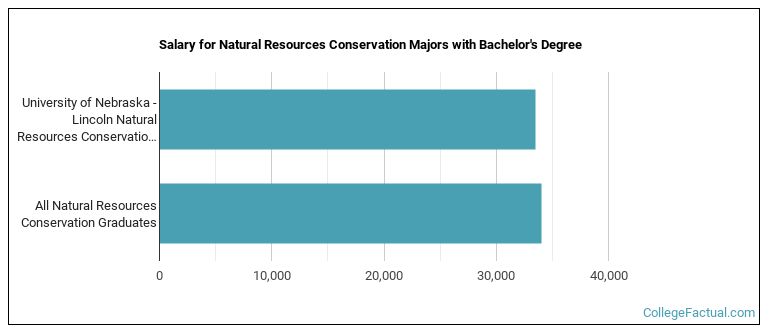
While getting their bachelor's degree at UNL, conservation students borrow a median amount of $34,709 in student loans. This is higher than the the typical median of $28,049 for all conservation majors across the country.
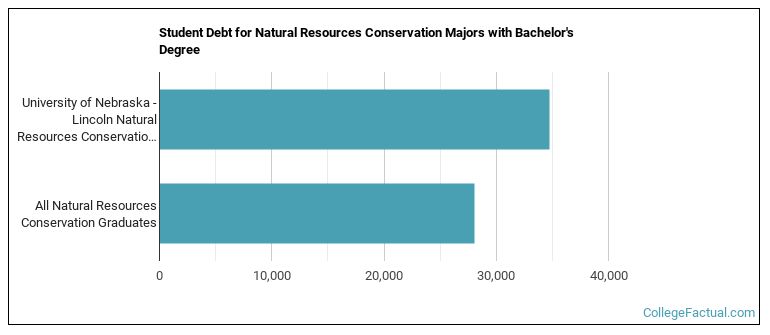
The typical student loan payment of a bachelor's degree student from the conservation program at UNL is $312 per month.
Out-of-state part-time undergraduates at UNL paid an average of $859 per credit hour in 2022-2023. The average for in-state students was $268 per credit hour. The average full-time tuition and fees for undergraduates are shown in the table below.
| In State | Out of State | |
|---|---|---|
| Tuition | $8,010 | $25,650 |
| Fees | $2,098 | $2,098 |
| Books and Supplies | $1,250 | $1,250 |
| On Campus Room and Board | $13,856 | $13,856 |
| On Campus Other Expenses | $3,442 | $3,442 |
Learn more about UNL tuition and fees.
During the 2021-2022 academic year, 101 conservation majors earned their bachelor's degree from UNL. Of these graduates, 43% were men and 57% were women.
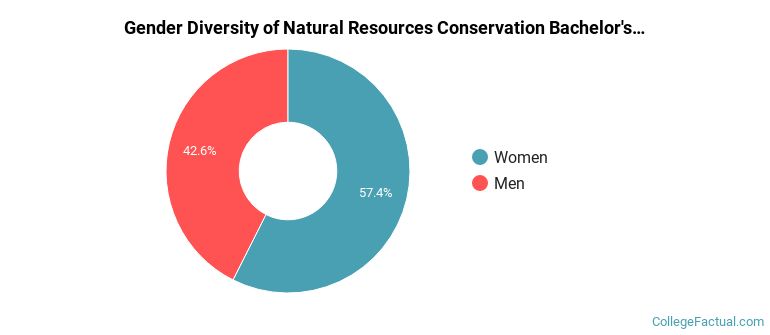
The majority of the students with this major are white. About 85% of 2022 graduates were in this category.
The following table and chart show the ethnic background for students who recently graduated from University of Nebraska - Lincoln with a bachelor's in conservation.
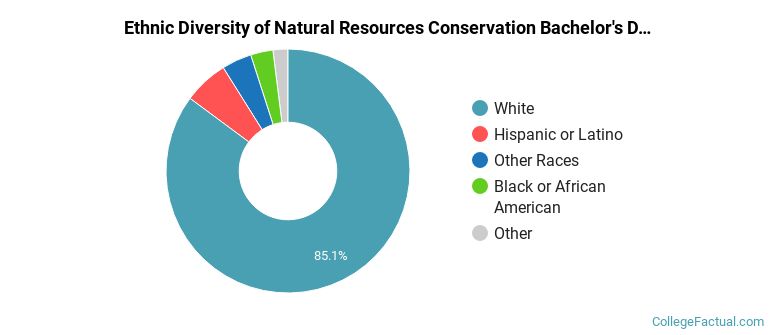
| Ethnic Background | Number of Students |
|---|---|
| Asian | 1 |
| Black or African American | 3 |
| Hispanic or Latino | 6 |
| White | 86 |
| Non-Resident Aliens | 1 |
| Other Races | 4 |
Online degrees for the UNL conservation bachelor’s degree program are not available at this time. To see if the school offers distance learning options in other areas, visit the UNL Online Learning page.
The conservation program at UNL awarded 17 master's degrees in 2021-2022. About 53% of these degrees went to men with the other 47% going to women.
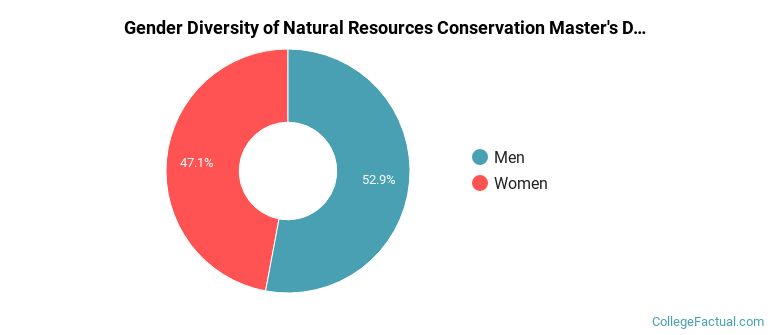
The majority of the students with this major are white. About 94% of 2022 graduates were in this category.
The following table and chart show the ethnic background for students who recently graduated from University of Nebraska - Lincoln with a master's in conservation.
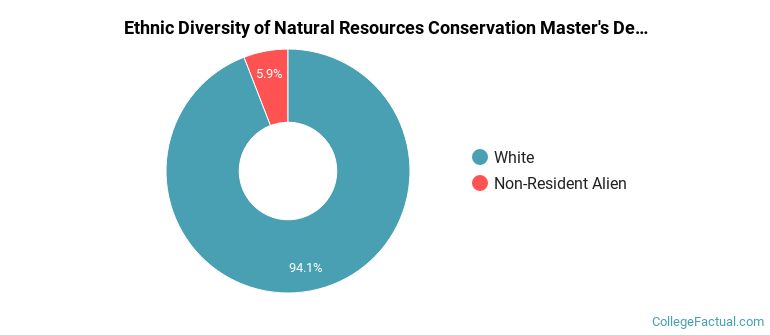
| Ethnic Background | Number of Students |
|---|---|
| Asian | 0 |
| Black or African American | 0 |
| Hispanic or Latino | 0 |
| White | 16 |
| Non-Resident Aliens | 1 |
| Other Races | 0 |
Take a look at the following statistics related to the make-up of the conservation majors at University of Nebraska - Lincoln.
| Related Major | Annual Graduates |
|---|---|
| Natural Resource Management | 4 |
| Forestry | 2 |
More about our data sources and methodologies.